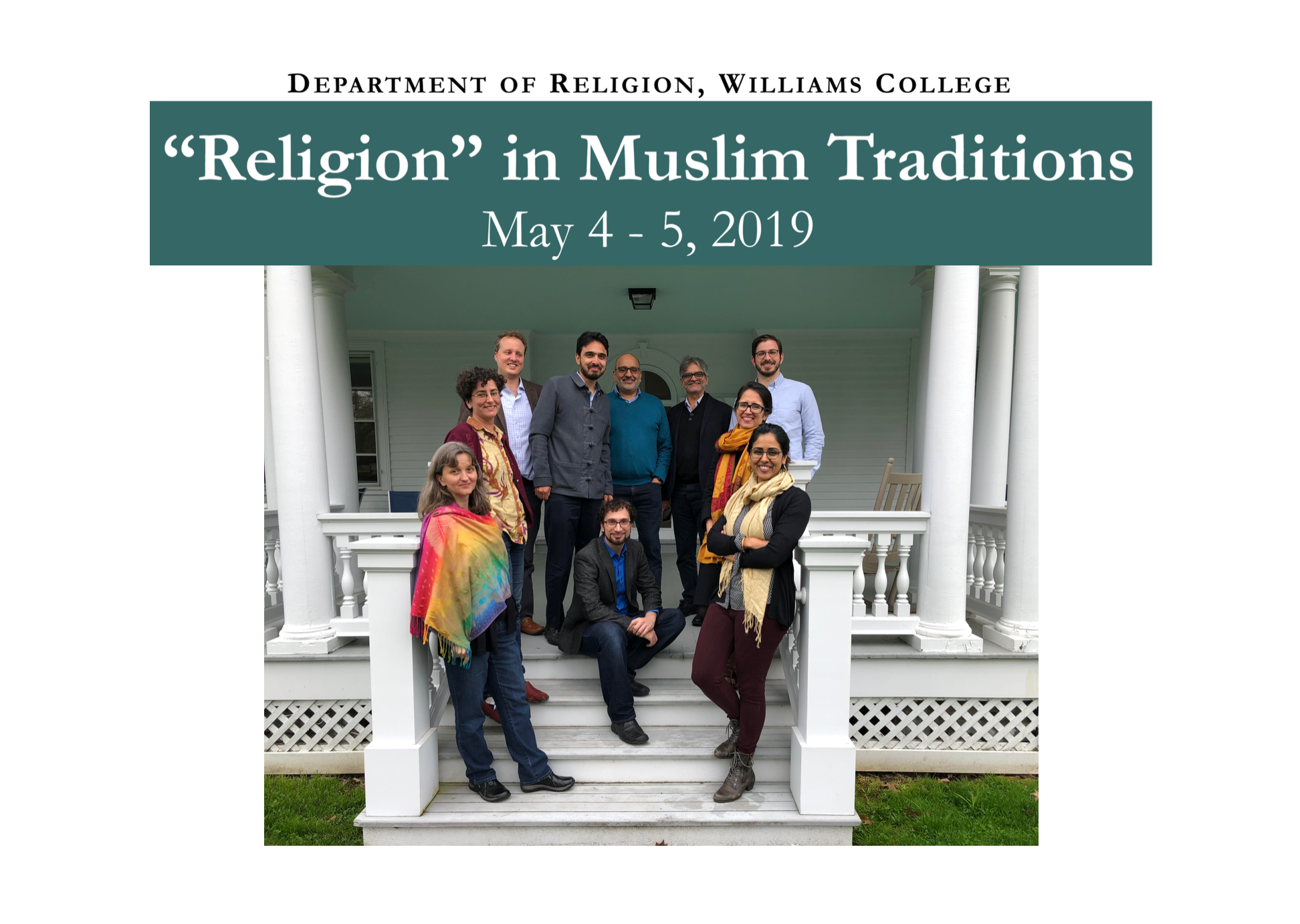
Roundtable | “Religion” in Muslim Traditions Workshop (May 4-5 2019, Williams College)
Convener | Zaid Adhami
Contributions by: Abdulkader Tayob, Amina Steinfels, Juliane Hammer, Zaid Adhami, Alexander Henley, SherAli Tareen, Teena Purohit, Humeira Iqtidar, Micah Hughes, Brannon Ingram, Ilyse R. Morgenstein Fuerst
While there has been a rich body of scholarship in Religious Studies and Anthropology that has provided us with a complex understanding of the emergence of the category of religion in the modern world, this issue and its implications have largely remained under-studied and under-theorized in the field of Islamic Studies. With this basic assessment of the field and a desire for deeper and more sustained interrogation of this issue, I organized and hosted a workshop at Williams College titled “‘Religion’ in Muslim Traditions” from May 4-5, 2019. I invited nine scholars – both nationally and internationally located, from graduate students to senior scholars – to participate in a forum that could serve as a space for informal dialogue and open-ended exploration. Each scholar presented some work or reflections on issues related to the general theme of the workshop. Some provided us with overviews and reflections on completed work, while others presented works in progress. The program consisted of five sessions, each with two twenty-minute presentations followed by 45 minutes of open-ended discussion. This generated a rich series of conversations around a number of important themes.
Included below is an overview of the background ideas, goals, and motives of the workshop. That summary is followed by a brief writeup by each participant, providing a basic overview or abstract of their presentation at the workshop, as well as some big-picture reflections and take-aways from the workshop. Finally, this broad presentation on the workshop concludes with two brief solicited responses written by Ilyse Morgenstein Fuerst and Brannon Ingram, reflecting on the core ideas presented below.
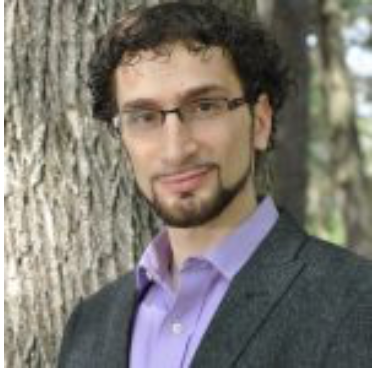
Zaid Adhami, Williams College | Overview
I’ll begin with a confession of sorts: I have been slowly laboring for some time now to fully understand the critique of the category of religion, the implications of that critique, and how it applies to Muslim contexts and Islamic traditions. We were of course exposed in our graduate studies to some of the core scholarly literature presenting that critique (Asad, Masuzawa, J.Z. Smith, and others). In my own research and dissertation, this critical literature helped me think about the forms that Islam takes in the contemporary context. Teaching undergraduates was essential in solidifying and clarifying the stakes of this issue for me.I have sought to help students see that what we think of as religion is not just a natural reflection of the world, but rather has emerged through the specific history of European Christianity, Enlightenment, and colonialism. I have endeavored to have them understand the social, political, and ideological work that is achieved by constructing neat distinctions between different “world religions,” as well as binaries between religion and the putatively “secular” domains of science, reason, politics, and race.
But in all this, there have remained some lingering questions that have not been clearly answered in my mind concerning how to analyze the way Islam fits into this picture. In the earliest prominent historical critique of the category of religion in Religious Studies, by Wilfred Cantwell Smith in his book The Meaning and End of Religion,we find the author making an exception in relation to Islam: as a tradition that has from the beginning had a conception of itself as a reified tradition, self-naming as Islam, with a conception of other religious traditions, and a general term dīnfor these religious communities or traditions. Although this book was written in 1963, there has been arguably little scholarship done directly addressing this issue, and little progress has been made on the key question that his study raises about the relation of Islam, dīn, and the category of religion. This raises three questions in my mind:
- Should we think of Islam as a “religion”? What are the implications of doing so?
- How has religion or religious difference been conceptualized historically in different Muslim contexts, from early Islam through the modern period? What did Muslim classifications of entities/traditions/groups we now think of as religion mean in those different contexts? How were those classifications structured?
- How does the study of Islam help us better understand the implications of the critique of the category of religion? What do we make of the critical literature on the category of religion if we take seriously the idea that Muslim traditions have had concepts like dīn that are analogous to how religion is understood in the modern world? Or alternatively, if we highlight the particularities and differences between dīn (and other Islamic concepts) and religion, how does that sharpen our understanding of the modern nature of religion?
Two trends
Aside from these three sets of questions, another way of characterizing the intervention I was hoping to make with the workshop was to bring together two trends of discourse in the scholarship. On the one hand, there is a body of scholarship that has made important arguments about the way in which the modern notion of religion is only possible to imagine through the rise of liberal-secularist governmentality, the formation of a secular-religion binary, and the differentiation of religion as a separate and bounded sphere of life. In this body of literature, the concept of religion as we know it can only be the production of Western modernity (and secularism in particular), and an imposition of Western Christian norms of what religion really is, rather than being a concept that is indigenous to other traditions and historical/cultural contexts. The category of religion is also understood to be part and parcel of the discursive universe of a colonial knowledge project. Thus we cannot understand modern notions of religion outside of colonial and secular power. This trend was exemplified by the contributions of Talal Asad (but of course not limited to him), and the rich body of scholarship that he has inspired, as well as later scholars who have followed his line of analysis. These insights are recognized by many in Islamic Studies, and the theoretical framework or conclusions entailed are applied to various contexts of study.
On the other hand, there are those in the study of Islam that would push against this line of analysis (whether directly or indirectly), and argue that with the Islamic tradition in particular we have a unique and different case, in that there is indeed a very central concept (or an aggregate set of concepts) that functions in quite similar ways to the modern category of religion. The concept of dīn (paired with other concepts such as millah, sharī‘ah, etc.) has historically been used to refer to an abstracted and reified idea of communities/paths tied to a prophet/scripture, or worship of a deity. It is used as a comparative concept and can be used in the singular or the plural. Moreover, the term can be differentiated from other domains, such as siyasah (the political) or ‘aql (the rational). All of this puts into question the insistence that religion as we understand it is only a modern Western conceptual category.
I would situate my own goal in organizing this workshop to be in between these two trends of discourse and conversations in the study of Islam. I take the claims of both these lines of argumentation seriously and think they point to valid observations and analyses. I believe that in between these two approaches, there are crucial questions that have been left unaddressed.
How do these concepts compare?
As an example of the state of the field and the work that needs to be done, let me turn to a very short essay by Ahmet Karamustafa, titled “Islamic Dīn as an Alternative to Western Models of Religion,” in Richard King’s 2017 edited volume, Religion, Theory, Critique: Classic and Contemporary Approaches and Methodologies. This essay (sadly the only chapter touching on Islam and Muslims in a massive 56-chapter volume) provides a very brief yet helpful overview of different strands of how dīnhas been studied in the field. Karamustafa begins by similarly pointing out how there has been little done following up on W.C. Smith’s early landmark study mentioned above. He calls for further work to be done beyond the existing studies on dīn in the Qur’an, to expand to other Islamic textual genres such as law, theology, and mysticism, as well as other discourses and intellectual areas such as literature, historiography, and science. Beyond this, he notes the challenge of breaking out of the confines of intellectual history to do social and cultural history, to explore how conceptions of dīn actually informed daily life. He also highlights the need to consider how this all compares to modern religion, and also the ways in which the categories of dīnand religion become intertwined in the modern period, a subject that has been very fruitfully explored by Abdulkader Tayob in his book Religion in Modern Islamic Discourse as well as a number of articles, and in Brannon Ingram’s upcoming manuscript on the subject.
But what is left quite unclear in Karamustafa’s essay is how to assess dīnas either analogous to or an alternative to Western models of religion. In the main sections of the essay, he provides a brief survey of some understandings of the concept, highlighting some of the following points:
- He shows a dual meaning/use of dīn in the Qur’an, between a natural/intrinsic monotheism in human nature, as well as different human groupings in how they relate to God (164-165).
- He addresses how Islam is seen as “the true dīn,” but also points out that there is acknowledgement that “leaves room for other, albeit mostly historically corrupted or deficient, dīns, and thus allows for a plurality of human orientations to God” (165-166).
- He argues that this conception of dīn is decidedly theistic, insistent on combination of belief, behavior, and functions at both the individual and collective level, and both the private and public sphere (166).
- He also argues for “long-standing counterparts in the Islamic tradition” to the post-enlightenment construal of religion as a private affair, insofar as there are powerful trends within Islam that equated faith with inner piety, a private affair between every individual and God, which cannot be known by anyone else (166).
But after these points, Karamustafa concludes in the final section: “With a rich and long history, Islamic dīn is certainly a powerful reminder that ‘religion’ is not a naturally universal category. At the very least, close scrutiny of dīnleads to a serious reconsideration of the legitimacy of characterizing Islam as a ‘religion’. Indeed, it is clear that ‘religion’ in any of the specific forms it took in western history, is not an automatically suitable category to use in describing Islam” (169). However, this conclusion does not seem to follow from the main body of the essay. If it is a valid conclusion, it has certainly not been demonstrated in the evidence that he only briefly marshals. Indeed he seems to have shown us a number of dimensions that seem to resonate with certain versions of modern constructions of religion.
I use Professor Karamustafa’s piece as an example to illustratethat the literature that has argued against seeing religion and dīn as comparable has more work to do in presenting us with a compelling explanation of how exactly to understand those differences, and how to think about the significant overlap we do find between understandings of dīn/Islam and modern religion.
Questions to address
Thus, to conclude, the objective or key inquiry of the workshop as I saw it was the following: if there does in fact seem to have historically been conceptual assemblages in Muslim contexts that are analogous in certain ways to the modern uses of “religion,” while at the same time we have come to understand the ways in which religion comes to be constructed the way it is due to modern historical processes, the rise of secularism, and the power of modern states, then this all raises important questions:
- How should we understand the differences between pre-modern Muslim formulations of dīnand the modern conception of religion?
- How would the critical theoretical literature on the category of religion help us understand the meanings and uses of dīnin the pre-modern world?
- Conversely, how would the recognition of Muslim histories of dīnnuance the theoretical and historical arguments about the category of religion, and the relation between religion, secularism, and western modernity?
- Finally, how should we understand the transformations of Muslim conceptualizations of religion/dīnand Islam in the modern world?
I believe that continuing to explore these and related questions has important implications in how we understand Islam as a trans-historical tradition, and how we understand modernity and the emergence of the secular world order we inhabit.
Themes from the workshop
In our discussions at the workshop, a number of important themes emerged, many of which are elaborated on in the reflections below, but which might be useful to briefly summarize here:
- The importance of differentiation in modern (or perhaps just liberal?) constructions of religion, and the seeming absence of the same kind of differentiation of a unique “religious” sphere in Muslim contexts.
- If there is not a single construction of “religion” in the modern context, then is it simply liberal constructions of religion that we are identifying as unique and different?
- The process of scripturalization as key to modern religion, and the Qur’an becoming “scripture” in that sense.
- The function of “religion” in classifying peoples, and marking differences among people.
- Seeing religious traditions as internally coherent, versus recognizing the multiple strands, diversity, and internal contradictions of traditions.
- The differing assessments of authority in different constructions of religion.
- Seeing religious truth-claims as objects of knowledge versus personal belief/faith.
- The particularity of modern state power, in contrast to pre-modern empires (such as changes in the role of bureaucracy, for example), and the changes in political theology that result from that.
- What are the political stakes of assessing the relationship between Islam, dīn, and religion?
- Is there an exceptionalism at play in seeing Islam as uniquely having a notion of religion? What are the political implications of that exceptionalism in our current political climate?
- Engaging the critique of “religion” as a decolonial project in which we explore alternative resources for imagining our world and constructively re-engaging these categories.
I will conclude by sincerely thanking the participants of this workshop, who put much thoughtful energy and time into their engagement with these questions, and generated rich and insightful discussion, as well as an environment of camaraderie and collegiality that was truly refreshing and energizing. I very much look forward to continuing these and other conversations in the future with everyone involved.
Participant Summaries
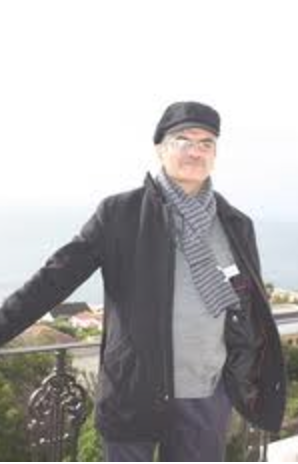
Abdulkader Tayob, University of Cape Town | Comparing Rumi’s ‘Din’ to ‘Religion’ in the Modern Academy
An unexpected argument has emerged in critical reflections on the study of religion since JZ Smith. He represents a line of scholars who have argued that the discipline formed around the concept of religion has been created by scholars of religion, which has no precedent. It is a uniquely Western project. This judgment is surprising in that it is often made with insufficient and in-depth attention to the intellectual traditions of Islam. Since Wilfred Cantwell Smith, we know that the reification of religion is not unknown in Manichaeism and Islam. He attributes this to the sectarian milieu within which these “religions” emerges. This, in my view, is the starting point for asking what intellectuals in this tradition did with religion (dīn or madhhab). We know that theologians, philosophers and Sufis were preoccupied with classifications and deliberations on these and other terms. Would this then constitute a discipline that may be compared with the discipline that we have inherited from the Enlightenment?
In his opening remarks at the conference, Jason Josephson-Storm suggested that the use of religion in the modern academy was best suited for Christianity. In other cases, it was an “asymmetrical reference.” I would like to argue that we can derive two implications from this asymmetry as applied in intellectual pursuits. Firstly, it seems to be useful to see how intellectuals in the Islamic tradition used the category “religion” in a very different way. One should not expect it to demonstrate a replica of the Western discipline. But for this reason, it offers a good comparison. Secondly, the asymmetry should be kept in mind when the categories of religions and the religious are applied in other non-Christian contexts. There seems to be a renewed interest in this application without always the realization of the asymmetry in one form or another. I would like to bring to mind the application of religion on the colonial frontier that has been demonstrated by David Chidester. That application, as we now know, was accompanied with violence and genocide. What kind of slips and infelicities will come with the application of an asymmetrical categories with eyes wide open?
My presentation at the workshop examined how the well-known poet Mawlana Jalal al-Din Rumi used the term religion in his Fīhī mā fīhī. Religion was not a master signifier of the book, but it was clearly distinguishable and identified in some of the lectures or sermons in the book. Rumi offers a critical perspective on the nature of religion. Identifying religions as desires, as flags and claims, he creates a category out of the many religions that constitutes a society. He seems to suggest an inevitability of this multiplicity in human society. Religions are undesirable or less sublime than what humans could be, but they reflect the human condition in an unavoidable way. Rumi suggests that this multiplicity can be overcome by a discriminating awareness, or when all will be revealed on the day of judgment. There is no original or natural religion that constitutes an essential human condition, only a reality that will be overcome by insight and discrimination. Religions in their multiplicity belong to this human reality.
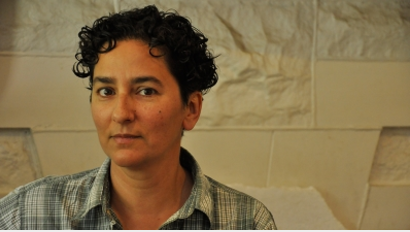
Amina Steinfels, Mount Holyoke College | Looking for ‘religion’ in a 12th-century compendium of knowledge: Fakhr al-Din al-Razi’s Jami` al-`Ulum
My presentation began with an overview of the recent critique and historicization of the concept of “religion” which points to its origins in post-Reformation Europe and its association with the rise of the nation-state, capitalism, and modern science. As used in both academic and everyday language, “religion” marks out a generic transcultural category of human activity, distinguished from politics, science, economics etc., and characterized by faith in god(s), the supernatural, or an ultimate truth. In its strong form, this critique suggests that such a conception of religion was absent in pre-modern and non-Western cultures. In my presentation I did a close reading of the chapter on “The doctrines of the world’s peoples” in Jāmiʿ al-ʿulūm, a compendium of knowledge composed by the famous Iranian theologian and polymath Fakhr al-dīn Rāzī (d. 1210). While Jāmiʿ al-ʿulūm as a whole contains chapters on topics which we would today label as religious, scientific, mathematical, linguistic, and social, without clearly demarcating these different areas, this chapter presents madhhab (doctrine) as a category that appears similar in some respects to the concept of religion. Rāzī asserts that all people reasonably acknowledge the existence of the Necessarily Existent (the philosophical term for the deity) and that different madhhabs are distinguished by their acceptance of prophets and by which shariʿa (divine law) they follow. This concept resembles the modern idea of religion in its generic quality, its claim to universal applicability, and its focus on the deity or ultimate truth. It differs, however, in that a madhhab is a matter of knowledge derived from rational and transmitted evidence, while religion is a matter of belief or faith.
This workshop was one of the most intellectually satisfying scholarly events I have recently participated in. The combination of a specific shared issue and a wide variety of approaches and case studies— ranging from domestic violence prevention in the contemporary United States, to modernist and reformist movements in nineteenth and twentieth century Middle East and South Asia, to pre-modern Islamic scholarly traditions—allowed for very lively and productive conversations. I learned a great deal from my fellow participants’ presentations, as well as from their comments and questions on my work. Besides the intellectual variety, it was significantly the gender balance, the range of participants’ academic rank from graduate student to senior scholar, and the international representation that made these rich conversations possible. Too often, I have experienced workshops and symposiums in Islamic Studies that are all male, intellectually homogeneous (all textual medievalists, or all historians of modernity, or all social scientists), and therefore intellectually stifling and sterile. I am very grateful to Zaid Adhami for breaking away from that pattern in organizing this event and I congratulate him on its success. The juxtaposition of different scholarly approaches, specifically between Juliane Hammer’s ethnographic work on domestic violence advocacy and the four of us who presented on pre-modern textual sources, raised a question that I will continue to wrestle with: if responsibility to domestic violence survivors and Muslim communities requires listening to their own self-representations and analyses of their contexts, what is the responsibility of those of us who work on pre-modern Islam to find a way to hear the voices of more than the extremely small group of male scholars who produced the texts upon which our research relies?
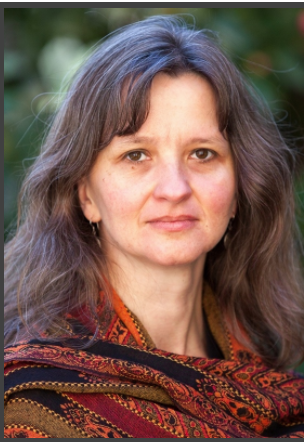
Juliane Hammer, University of North Carolina Chapel Hill | Islam and Domestic Violence: Religion (and Culture) as Contextual Categories
My contribution to the workshop proceeded from the assumption that religion, and more specifically Islam as a religion, is a specific construction, determined by Muslims and non-Muslims in a particular time and place. Thus it is not a stable or self-evident designation or analytic in the modern period, even if we recognize it as a product of modernity. Consequently, it is useful to explore how “Islam” is constructed as religion in a specific context. In my research and new book, Peaceful Families: American Muslim Efforts against Domestic Violence, I recognized one such specific construction and configuration of Islam as religion, namely as the opposite of culture.
In Muslim advocacy and service work in the United States, “Islam” is thus constructed as authoritatively rejecting domestic violence in any form. This “Islam” is found in the Qur’an and the Sunna, thereby becoming an agent, rather than a system of beliefs and/or practices, produced by Muslims. The production of this Islam against domestic violence is at least in part a response to anti-Muslim hostility with its attendant dimensions of anti-Muslim racism and the othering of supposedly alien gender norms and practices. In order to identify possible causes for domestic abuse in Muslim families, Muslim advocates have turned to “culture” as a culprit, which also allows for the simultaneous construction of a culture-free, pure and timeless Islam. There is, however, also a nuanced approach to “Islam” that takes inspiration from mainstream work against domestic violence by recognizing it as potential resource or roadblock in efforts against domestic violence. This second thread allows for recognition that Islam is a construction, thereby moving the conversation to questions of authority and interpretations as well as practice as a source of discourse.
The conversations and presentations during the workshop have deepened as well as challenged my thoughts on Islam as religion. In particular, I was encouraged by support for my argument that the Qur’an as scripture, rather than being a timeless adage, has itself been centered from the nineteenth century onwards. Embraced by both colonial thinkers and Muslim intellectuals, the Qur’an as the scripture of Islam construction supported the argument that Islam is a religion with recognizable (and comparable) beliefs, texts, prophets, etc., which in turn allowed for both its placement in a hierarchy of religions and its recognition as a religion at all.
I was most challenged by arguments and materials, presented by colleagues during the workshop, that point towards pre-modern classification systems for what modern scholars would call religion. Regardless of whether “din” is a pre-modern word that is the equivalent of religion or whether there were other ways in which religious systems and traditions were described and distinguished from each other, the challenges for me lies in accepting that pre-modern classification systems also contained hierarchies of “religions” and a significant investment in supersessionism. My concern is how the existence of religious systems with boundaries and distinctions affects the potential for critiquing the modern and European colonial construction of “religion” and of a hierarchy of “world religions” as co-constitutive with the racial and civilizational hierarchies that supported the violent domination of the world by European powers.

Zaid Adhami, Williams College | Convincing the Masses: Creedal Belief, Orthodoxy, and Religion
My paper addressed our explorations into the category of religion through my engagement with the discourse on “religious belief” and secularization. I began by observing that there is a seeming consensus across a wide swathe of scholars, all of whom present a common narrative framing of modern religious belief. They argue that in the premodern/medieval context the Christian Church was so thoroughly embedded in the social order that one couldn’t meaningfully distinguish between religious assent and other forms of socially institutionalized knowledge. Individuals would not need to be convinced of Christian truths and come to “believe” in them. Thus religious belief was not about conviction, but about an additional relationship of faithfulness to that which was already known. It is only with the modern construction of religion as a separate domain requiring conscious personal affirmation, that “belief” becomes seen as personal internal judgment about the truth of creedal propositions.
Building on this framing, my presentation considered how applicable such a narrative is in relation to certain Muslim contexts. I primarily compared two different cases from the early medieval context, in which there is a concern with teaching “lay people” or “commoners” about creedal truths as well as their rational justifications. The case of al-Isfarayini’s aqida tract demonstrates how personal comprehension and conviction is privileged by kalam theologians, thus exhibiting a unique concern with interiority regarding religious truths. The case of al-Ghazali demonstrates how his concern with creedal affirmation, comprehension, and justification among lay people was an indication of the extent to which the basics of divine truth (that is, Sunni orthodoxy) were not taken for granted and naturalized in the social order.
In these contexts, Islam thus seemed to have been understood on the one hand as the basis of a salvific polity and that which legitimized political sovereignty, while at the same time also having dimensions of how “religion proper” is imagined in a modern liberal context – that is, the domain of how individual people worship a deity and seek to attain salvation. The aspiration of creating a hegemonic orthodox social order was never achieved, and in aspiring to achieve that, it required an attempt at persuading the public of the validity of the orthodox creeds. This in turn requires an emphasis on personal conviction and interiority. This to me points to a relation between movements of orthodox revival/reform, and a process of “secularization” (in the sense of a heightened demand for self-conscious affirmation and justification of religious belief, which then makes religion a more clearly demarcated sphere of life).
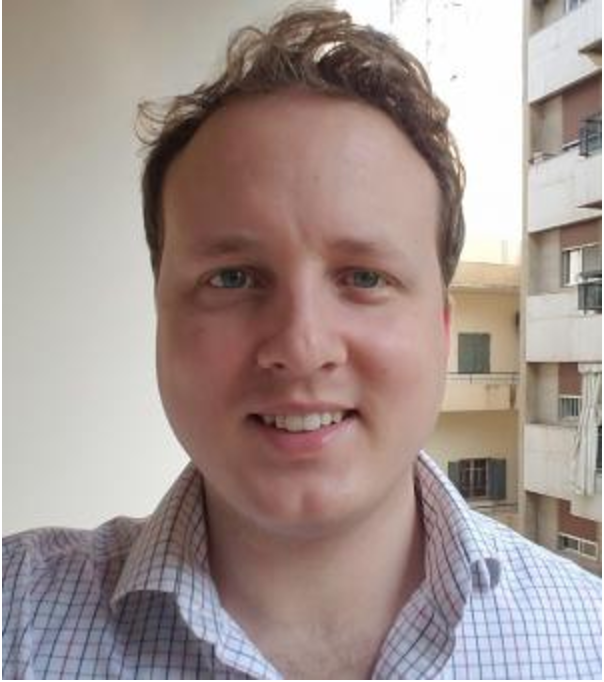
Alexander Henley, Oxford University | The invention of religious leadership: Institutionalization of Islam in the modern Middle East
In my presentation I proposed looking at changing institutional practices as a window into broad-based discursive shifts in the modern period. Whereas there has been a growing interest – as seen in this workshop – in the ways Muslim intellectuals conceive ‘religion’ or how it structures Muslim thinking, I see less work being done on the ways this discourse shapes what Muslims do. I painted a picture of the rise of official ‘religious leaders’ on the basis of my research in Lebanon, Jordan and Palestine. These states, like many others, have created hierarchies of ulama, often headed by a ‘Grand Mufti’, to administer a newly-imagined sector of ‘religious affairs’ (al-shu’un al-diniyya) that brings together previously disparate institutions including mosques and other awqaf, personal status courts, schools, and charitable associations. Those who work in this sector have been professionalized as a ‘religious corps’ (al-silk al-dini) with clearly-defined qualifications, career pathways and ranks in the hierarchy. I argue that this process of institutionalization has not simply been a co-optation or subjection of the ulama by modern states, but reflects the invention of religion as a thing to be administered and represented. It has transformed certain ulama from scholars into ‘religious leaders’, a role that may be divorced from traditional forms of knowledge production altogether.
A Critical Religion approach can help us identify and understand large-scale shifts in Muslim thought and practice that have otherwise gone unnoticed, or that have been labelled as (perhaps partial) secularization. What a secularization model often misses – as Micah Hughes also noted – is the productive dimension of these shifts. Imagining ‘religion’ as a distinct sphere and ‘religions’ as reified entities has generated a space for Muslim creativity and empowerment. I found it interesting that the workshop conversation drifted between these two sides of the discourse of ‘religion’ (‘the religious’ and ‘religion/religions’). To what extent can these be considered as separate questions?
There is a risk – as Josephson has emphasized in his work on Japan – of presenting the discourse of religion simply in terms of a globalizing Western hegemony. That picture can reduce it to a kind of epistemological secularization, not quite with the natural teleology of the classical secularization thesis but with a similar bulldozing inevitability. Focusing on Muslim inventions of religion can bring into conversation the Critical Religion emphasis on modern Western discourse and the Islamic Studies emphasis on pre-existing concepts. Recognizing Muslim agency in the making of Islam as a modern religion may also help us avoid an authenticity witch-hunt that discredits Muslim uses of the category ‘religion’ and seeks to re-create a ‘traditional’ way of being Muslim without ‘religion’. The various workshop presentations demonstrated diversity and change in Muslim understandings of ‘din’ etc, suggesting that perhaps the best we can do with these is highlight the continuous productivity of Muslim discursive imagination.

SherAli Tareen, Franklin and Marshall College | Cow Politics in Colonial Muslim India
I presented a draft of a chapter from my second book project, Hindu-Muslim Encounters: Power, Politics, Political Theology. Hindu-Muslim Encountersexplores the question of how South Asian Muslim scholars, especially traditionally educated Muslim scholars or the ‘ulama’ imagined and contested the boundaries of Islam from the late-eighteenth to the mid-twentieth centuries. Anchored in the theoretical framing of “encounter” as a moment of formation for religious identity and difference, this book charts multiple ways in which Islam’s encounter with the non-Muslim ‘other,’ especially the Hindu ‘other,’ fermented critical debates over the limits of Muslim identity in South Asia, during the region’s transition from late Mughal to colonial and the late colonial periods. The particular paper I presented at Williams dealt with a chapter of this book that explores Muslim scholarly discourses and debates on cow slaughter in late nineteenth and early twentieth century North India. The question of cow slaughter emerged as a subject of tremendous contestation and controversy among South Asian Muslim scholars in colonial India, generating copious and passionate responses. While some of them, especially those allied with Gandhi who led the early twentieth century Khilafat Movement, saw abstaining from cow sacrifice as a critical gesture of inter-religious hospitality and as a crucial ingredient for cultivating Hindu-Muslim intimacy while confronting the monstrosity of British colonial power. For a competing group of scholars however, chief among them the founder of the Barelvi orientation, Ahmad Raza Khan (d. 1921), cow sacrifice was a symbol of Muslim distinction in India and thus abandoning this practice under the pressure or coercion of the Hindu community amounted to the shame and humiliation of Muslims. Through a close reading of this early twentieth century intra-Muslim debate, my paper showed ways in which the cow served as the material and discursive battleground on which competing visions of the normative boundaries of inter-religious friendship were articulated and contested. Moreover, I also argued that while wrestling with complex legal and theological arguments about the normative status of abandoning cow sacrifice, ironically, these debates often ignored the materiality of the cow itself.
In terms of a broader take-home point from the conference, I think our conversations highlighted the importance of more substantive cross-pollination between anthropological and more textually oriented approaches to the study of Islam. One of the most pervasive features that informs our lives as scholars and teachers of Islam-in the classroom, on-campus, and in the scholarly and non-scholarly community-is represented by the constant pressure to contend with the specter of liberal secular power that nourishes commonplace assumptions and normative expectations about the place and role of religion in the modern world. Some of these assumptions and expectations include the push to relegate religion to the private sphere, the quest to find and identify moderate Muslims, the desire for autonomous subjects who resist external forms of authority, the division of religious actors into binaries like religious/secular, moderate/extremist, unflinching faith in the separation of religion from politics, and the insistence to explain motivations for violence emanating from Muslim actors or to unearth the meaning buried in ritual practices. There are two ways in which the taken for granted-ness, or the often-assumed naturalness and inevitability of such secular assumptions of life might be disrupted: 1) by navigating the resources and complexities of the Muslim intellectual tradition in order to show and highlight ways in which that tradition does not always operate according to liberal secular rules and logics, and 2) by showing the tensions, contradictions, and violence of secular power. While the first task is most often performed, even if not always framed as such, by textually oriented scholars of Islam in various subfields, the second has remained the purview of anthropologists of Religion and Islam/scholars in the burgeoning and exciting recent field of Secularism Studies, most notably Talal Asad and his students and interlocutors. The discussions at our conference highlighted the benefits as well as tensions involved in seeking to more substantively integrate these two concurrent yet often less interactive streams of scholarship in Islamic Studies today. More concerted efforts at such integration and interaction offer the dual dividend of adding complexity and nuance to our understanding of the Muslim intellectual tradition, while also disrupting and provincializing the universalizing claims and promises of liberal secular power.
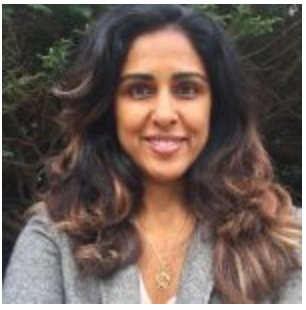
Teena Purohit, Boston University | Mawdudi’s Islamic State and the Boundaries of Inclusion and Exclusion
Before presenting my actual paper, I began my presentation by providing an overview of my recently completed manuscript on the subject of Islamic modernism. I described how this book takes up the subject of modernism from the late nineteenth century until the mid-twentieth century with the figures of Jamal al din Al Afghani, Sayyid Ahmad Khan, Muhammad Abduh, Rashid Rida, Abul A’la Maududi, and Syed Qutb at the center of the study. The book is framed by these modernists’ redefinition of tauhid as political unity. For the modernists, tauhid served as the means through which they outlined their ideal Muslim community—one that they believed was unified in the past and that could possibly unify in the future. I explained how the modernist view of tauhid as political unity opens up into a site of intra-Muslim polemics: tauhid as Muslim unity has clearly demarcated insiders and outsiders. The book interrogates modernist arguments against “outsider” groups, specifically the Ahmadis, Bahais, Ismailis, and the Shia more generally. The paper for the workshop examined the arguments of Maududi against the Ahmadis in 1950’s Pakistan.
The workshop was a stimulating and generative space to share the newly coherent ideas of the book to leading international scholars in the field of Islamic Studies. Many were sympathetic to the argument, and there was helpful pushback on some of the questions and angles through which I addressed the Ahmadi question, which I also found incredibility productive. I appreciated very much the thought that went into the group that was selected. As someone who works on very male Muslim intellectual thought and whose primary interlocutors are men, it was refreshing to be able to hear the feedback of my female peers and colleagues in the field, an opportunity I do not get very often. I was also grateful to have the chance to hear the work of young scholars and female scholars whom I would normally not have an opportunity to engage with in such depth and over the period of two days. I am incredibly grateful to the organizers for this.
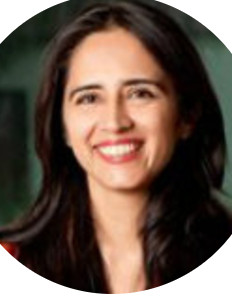
Humeira Iqtidar, King’s College London | Maududi’s ‘Theodemocracy’: Religion and Popular Sovereignty
Abul A’la Maududi (1903-1979), the influential Indo-Pakistani thinker, is widely seen as a key ideologue of what today we call Islamism. His vision of an Islamic state, as well as his elaboration of ‘theodemocracy’, has received much attention, and significant misunderstanding particularly in popular media. In this essay I add depth to our understanding of Maududi’s Islamic state by providing a glimpse of the diverse hinterland of ideas that Maududi drew upon, from the Islamic, Pan-Asian and European debates as well as his lived experience in British India, and later, Pakistan. I argue that Maududi saw popular sovereignty as a moral problem. Popular sovereignty, he thought, corrupted the potential for individual moral development that the institutional mechanism of the state could otherwise allow for. Theodemocracy was his attempt at divorcing sovereignty from the state while retaining the state’s institutional framework for the moral transformation of individuals. Maududi’s Islamic state has to be viewed as an immensely influential and critical engagement with the emergence of the state, both the idea and the institution, as the dominant political frame of the twentieth century for social, political and individual transformation. His endeavor generated creative tensions, and forms an important contribution to the ideas about the state that have inspired political action and debate around the world. His engagement with the state idea, necessarily entailed greater imbrication with European visions of religion and religious life.
The workshop generated a highly productive conversation about the category of religion and the precise implications of Eurocentric theorizing upon the Islamic tradition. In previous and ongoing work I have argued that Islamist thinkers reworked colonial categories and ideas creatively to create a bridge between Islamic thought and European political theory. It was productive with this in the background, for me, to think in more depth about the variations within the Islamic tradition across time and space. There can be little doubt that the Islamic tradition is highly self conscious of itself as a tradition and that different terms such as mazhab imply an imaginary that might seem close to the vision of religion as specific domain of life that is dominant in modern European sociological and political theories. Compared to say Hindu or Confucian thought that we discussed briefly, Abrahamic traditions share more in terms of structures of thought and conceptual vocabulary. Nevertheless, the discussion at the workshop also highlighted the distinctiveness of these Islamic ideas and the difficulty of containing them fully within the container “religion.” Perhaps it would have been very useful to define more clearly what we mean by European definitions of religion because there were some variations in how different participants used the term: from interiorized, individualized belief to laws applying to specific populations to specifying a sphere of the transcendent. Another important strand of conversation highlighted the long running hybridity that is absorbed within Islamic thought on an ongoing basis. To me that seems in large part because Islamic knowledge production and consumption has retained significant autonomy still from structures of state and market. This would also have been interesting to explore in more detail. Finally, one area that I realized later, we did not address too directly was the intellectual and political purchase of thinking through the differences rather than the similarities between different conceptions of religion.
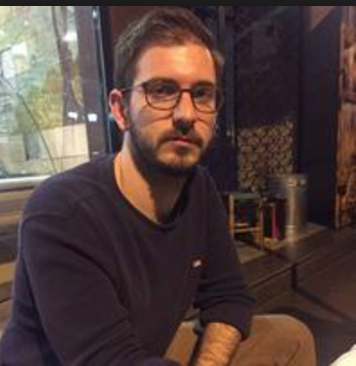
Micah Hughes, University of North Carolina Chapel Hill | Translating Religion in the Modern University
In 1928, İsmail Hakkı Baltacıoğlu, then a professor at the Darülfünun—the predecessor to Istanbul University—drafted and submitted a report titled the “Declaration of Religious Reform” (Dini İslah Beyannamesi) to his colleagues in the Faculty of Theology (İlahiyat Fakültesi). The committee, convened at the request of Mustafa Kemal Atatürk and placed under the supervision of the famous Turkologist, Mehmet Fuat Köprülü, comprised scholars from different educational backgrounds, all of whom were invested in coming up with solutions to one of the more pressing matters in the early Turkish Republic: what to do about religious institutions and religious sensibilities. The “Declaration” was a controversial document; it proposed reforms in Muslim practices of worship, religious aesthetics, languages of worship, and professionalization practices for teachers, imams, and future scholars. The proposals outlined in the “Declaration” included putting pews in mosques, allowing clean shoes to be worn inside houses of worship, instrumental accompaniment for collective prayers, and the use of Turkish in place of Arabic for prayers and sermons. These proposals were seen as an affront to the pious sensibilities of many Turks and reflected the modernist aspirations of an urban intellectual elite invested in reform of moral subjectivities through restructuring devotional practices and the institutions that sustained them. As Halide Edib Adıvar observed in 1929: “The occasional attempts of university professors to propose new forms of worship in Islam…have met with profound displeasure.”[1]
What made the 1928 “Declaration of Religious Reform” an interesting topic for me to present at the workshop was the “Declaration’s” locus of production and dissemination. It was a reform project that aspired to transform religious sensibilities, but attempted to do so from the halls of higher education and, thus, reflected a specific set of concerns. The university was not only a place for the cultivation of citizens disciplined into a modern education in the fields of history, science (social and physical), medicine, and law, but was also a site for the articulation of religious reform and the translation of traditional Islamic sciences such as fiqh, kalam, and tasawwuf into modern, secularized notions of law (hukuk), philosophy of religion (din felsefesi), psychology (ilm-i ahval-i ruh, ruhiyat), and mystical literature (mistisizm, edebiyat). These labors of translation into the languages and grammars of secular social science are some of the more radical transformations of Muslim intellectual practices to occur in twentieth century Turkey, but have largely been overshadowed by a scholarly focus on secularism as a political ideology and the subjugation of religious discourses and institutions to the machinations of state governance (secularism as a problem of governmentality). The question raised here is not so much about the Turkish Republic’s effort to ban, control, or marginalize religion (it did all of those things), but rather what practices of translation were used to radically reconfigure epistemologies dominant in the past into ones modified to fit the demands of the present and the future. Alongside the bureaucratic takeover of Muslim institutions in the aftermath of empire were the equally significant processes of reshaping the medresesystem and dividing it into schools for the training of imams (imam-hatip okulları) and a faculty of theology geared toward the production of a new category of thinker: “the philosopher of religion.”
In short, and this was my main point in the presentation, while secularization didoccur at the level of state policies towards religious practices through a mechanism of “conscription” (governing Islam through controlling the autonomy of Muslim institutions), another layer of secularizing processes took place in the translation of Muslim scientific discourses that produced “religion” and “Islam” as objects of knowledge. Thus, a Turkish tradition of “Islamic Studies” was born, which affected not only scholars in higher education but also pious Muslims who now accessed their tradition through the halls of academia.
Thinking through these themes in the context of the workshop afforded a rare opportunity to address a range of topics amongst scholars of Islamic studies in the fields of religious studies, political theory, and area studies and across a number of different theoretical positions coming out of gender studies, secularism studies, “post-secular” theory, postcolonial theory, and other related approaches. For my own thinking in the Turkish context, I was intrigued to see a number of cases in which the processes of reform (e.g. in British India, Pakistan, and Lebanon) were often homologous while remaining localized conjunctures addressing their own unique issues and questions. The problems faced by Muslim majority societies were not identical (Turkey was not strictly a post-colonial state as Lebanon or Indian were, even though it was a post-imperial one) and yet a sense of crisis in norms, institutions, and practices of governance was ubiquitous. How the “question of religion” was generated within the contours of the Islamic tradition (its agents, organizations, events) in each location deserves sustained attention. And yet, an analysis of shared discursive operations of reform (such as translation) might afford opportunities to think collectively about transformations in the early twentieth century as global in scope while still local in effect.
These questions enable us to refocus attention to Muslim intellectuals’ creative engagements with shared problems. This is not to suggest that conditions of action were entirely autonomous; the constraints were, in fact, great. But this should not discourage us from paying close attention to the specific types of discourse generated and action taken in light of problems faced, even as we acknowledge the heteronomous conditions of agency. Thinking religion in modern Muslim traditions means thinking about the specific practices adopted and adapted to make sense of a shared set of conditions, even as those conditions shape what responses seemed possible under the constraints of modernity.
[1]Halide Edib [Adıvar], “Dictatorship and Reforms in Turkey,” The Yale Review 19 (1929): 36-37
Outside Responses
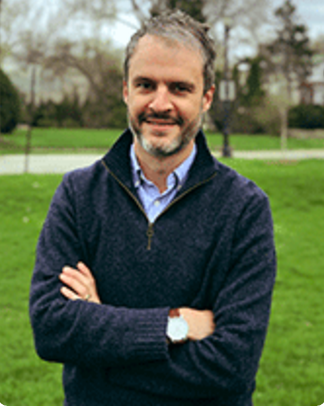
Brannon Ingram, Northwestern University
I deeply appreciate the opportunity to respond to the themes and papers of this conference.
What do we mean, precisely, when we call Islam a ‘religion’? This question puts scholars of Islam and Muslims into a peculiar sort of bind. On one hand, we are beginning to interrogate the history by which Islam came to be regarded as a religion, including the formation of the category of religion in the West, how that category became imbricated within colonial discourses globally, and the category’s effects in the present. On the other hand, the ethical and political implications of this debate have never been more vexed, as Islamophobic denials that Islam is a religion have moved from the fringe to the mainstream of the American right. For me at least, the conversation has a Janus-faced quality: in one direction, I find myself complicating the idea that Islam is a “religion” (where the quotation marks are meant to call attention to the unsettled, unstable nature of the category). In the other direction, I find myself affirming and re-affirming: but of courseIslam is a religion! (quotation marks now notably absent). Surely, this is an open-and-shut case. Even the Department of Justice said so.
Politics aside, there may be other reasons Islamic studies has been slow – at least compared to recent works in Jewish studies, for example – to explore the history and process by which the Islam=religion equation was naturalized. As Adhami suggests, one reason may be the lingering influence of Wilfred Cantwell Smith’s “exception” thesis: that, unlike other traditions, Islam self-reified from the very beginning. That is, in the Qur’an itself, especially in verses like 5:3 (“This day I have perfected for you your din… and approved islam for you as din”), we see a generic concept like ‘religion’ (i.e. din), and a specific species of it (i.e. islam), stipulated for Muslims. Of course, it is not, and has never been, quite that simple. Many scholars have discussed the gradual, centuries-long transition from a Qur’anic islam to Islam, the ‘world religion’ that we know today. But most importantly, Smith’s legacy is that we remain largely trapped in an essentialist, scripturalist, Qur’an-centric debate about where, how, and on what terms ‘religion’ is articulated in Islam’s formative texts.
This conference attempts to move beyond that scholarly inheritance. The papers explore specific theorizations of din and ‘religion’ in premodern (Adhami, Steinfels, Tayob) and modern (Hammer, Henley, Hughes, Iqtidar, Purohit, Tareen) Islam. They attempt to discern not just how these theorizations operate in texts, but how they shape institutions (e.g. Hughes and Henley) and Muslims’ self-representation in public life (e.g. Hammer). These papers push the conversation beyond textual analysis and intellectual history, towards social history and ethnography.
Hammer’s paper does this particularly well, and reminds us that this is not an academic exercise in deconstructing categories. It is an effort to understand how the category of religion does real work, how it has palpable and sometimes pernicious effects. Hammer’s interlocutors are pressured to defend a timeless, ahistorical “Islam” that condemns domestic violence, blaming “culture,” the “real” culprit whenever a Muslim commits abuse. American Muslims are put into a sort of discursive trap wherein their only way out is to re-essentialize Islam. The notion that perhaps neither “religion” nor “culture” helps us understand abuse, or the notion that the religion/culture distinction itself is a construct, go mostly unquestioned. Emphasis on “mostly:” Hammer also sees anti-domestic violence activists increasingly recognizing Islam as “a construction, thereby moving the conversation to questions of authority and interpretations as well as practice as a source of discourse.”
Hammer’s paper reminded me of what Nadia Marzouki calls the “formatting” powers of Protestant Christianity in America. The pressure on American Muslims to format Islam around normative ideas of what ‘good’ religion constitutes is immense. We see this in myriad forms, as in the constant effort to disabuse non-Muslim Americans of their misconceptions about Shari‘a. The Shari‘a, according to this defensive posture, is really about one’s inner spirituality, not about amputations and stonings. This is but one among many ways contemporary Muslims package their Islam, rendering it interior, private, and apolitical – which is to say, relatively harmless (but never harmless enough to satisfy their critics, who have another trap, accusations of taqiyya, waiting in the wings if someone manages to escape the first one).
This is, of course, nothing new. The defense of Islam as rational, private, and irenic have deep roots in the colonial era. And that defense goes beyond well-known modernist trends. In the first chapter of my book, I argue that the Deoband movement emerged in and through a newly-privatized category of “religion” in colonial India, one that granted Indian Muslims a degree of autonomy in managing their own “religious” affairs, but on terms stipulated by the British, and only so long as they stayed in line. Thus the Deoband movement goes virtually unmentioned in the colonial archive until a number of major Deobandi scholars mobilized against colonial rule in the early twentieth century. But the Deobandis were for the most part unconcerned with whether Islam was or was not a “religion.” In my second book project, I’m exploring how and why certain late-colonial Muslims – “Islamists” avant la lettre – went so far as to challenge the idea that dincorrelates with “religion” at all. Mawdudi, the subject of papers by both Purohit and Iqtidar, is perennially at the center of this critique of “religion.” For him, “religion” was an imperialist imposition, designed to denude Islam of its political capacities.
This brings us full circle to imperialism’s legacy in the present. Adhami concludes his reflections by asking how we might envision a post-imperialist, decolonial critique of religion as a way to “explore alternative resources for imagining our world and constructively re-engaging these categories.” Above all, this conference reminds us that categories are never settled, and that scholars of Islam have a role in shaping the future of these debates.
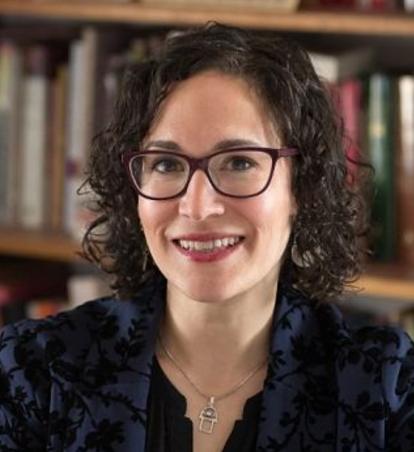
Ilyse R. Morgenstein Fuerst, University of Vermont
It turns out that I missed a really important conference! I’m grateful that Zaid Adhami has invited me to join in these conversations from afar.
This conference started from three primary, overarching questions:
- Should we think of Islam as a “religion”? And what are the implications of doing so?
- How was religion or religious difference conceptualized historically in different Muslim contexts?
- How does the study of Islam help us better understand the implications of the critique of the category of religion?
These have bearing not just on what Islamic studies might be at this moment in time but also on how we might see the troubled history of both Islamic studies and religious studies at work now. There is and has been a homogenizing influence upon the study of Islam in EuroAmerican academe from the start—rather on purpose.
The study of religion is inextricable from the histories of European colonialism and imperialism, the racialization of non-Europeans viz. Europeans, the delineation of “good” religions from “bad” ones, the collapsing of composite, complex regions, ideas, practices, ethnicities, even languages into (manageable) singularities. It is only in this context that both the study of religion and religions, i.e., Islam, is developed and becomes ensconced in the University.
This history necessarily encodes, then, a comparative method—however rigged that comparison has been. That we need to think through whether and how “Islam” fits into “religion” is evidence enough of this racialized and racist, gendered and misogynistic, Eurocentric and Orientalist connotations that are historic, ongoing, and even epistemologically violent.
And yet.
Many scholars—including those whose work is represented here and that I am sad to have missed—interrogate both “Islam” and “religion” as key nodes of critique, scholarship, and places of fruitful intellectual labor. As I’ve argued (in part, on this very site!), the particular history of the study of religion, of Orientalism, of the racialization of Islam, of the terrorism-linked rise of the study of Islam in American universities, of the negative analyses levied at Islamic studies for being theoretically poor all make—to my eye—Islam a crucial site of critique to the very system that produced it.
In fact, the work represented here makes that plain. As Amina Steinfels noted, what Zaid Adhami, as the conference organizer, was able to achieve in terms of intellectual engagement and scholarly rigor was precisely because he paid attention—and prioritized—parity. Not equivalence nor uniformity, but parity—in rank, home region, research focus, methodology and gender. Representational parity is not (merely) a liberal values-marker of superficial inclusion. It is a political value to be sure, and it is also utterly necessary for meaningful and provocative knowledge production—what I suggest is at the heart of how we think about critique in Islamic and Religious Studies, these related but distinctive fields and constructs.
So, I wonder, if parity—as opposed to the comparison models of imperialism and post-colonial secular studies of religion—could be a sort of model for parsing whether and how “Islam” fits into “religion,” how Muslim histories have made sense of religion/religions, and how Islamic studies might meaningfully offer a framework for rethinking religious studies.
What if we could strive not to compare religions in some imperialist battle royale model, where many things-we-call-religions enter but only one may leave, but rather to assume theoretical parity in ideological systems such that examining their products could be seen as part of global yet local, specific yet understandable, contextualized histories? In other words, what if we assumed that like religion, Islam is a construct, defined, redefined, contested by its locations, regions, languages, histories, gendered and racialized iterations? What would that open up in our lenses of critique?
Parity here is a call for imagining not equivalence but the possibility of connection across interest, field, discipline between scholars and across region, language, history across areas of scholarship. In a field that assumes disparity and that, historically, has assumed disparity as well as hierarchical levels of “right” and “wrong,” parity seems a way to think through more than just our interlocutors—but a way to highlight what has been ignored, lost or erased. Amina Steinfels, Juliane Hammer, SherAli Tareen, Teena Purohit, and Humeira Iqtidar all—albeit in differing ways—mention how norms of textual engagement skew research into other fields and especially skew historic investigations toward male-dominated arenas.
A group of scholars met to talk about the role of religion and Islamic studies. Many mentioned how generative the conversation was because of the representation across rank, genders, national/geographic locations and area of research interests. In this setting, a focus on parity allowed for a distinctive space, that space yielded new ideas, those ideas are before you here. Parity is more than a value system, it is the method of generation.
What would that look like on larger scales? What would parity look like in instances where parity is either unlikely or impossible? What work does asking the question about who and what is missing accomplish? What does attempting to solve that problem yield? What might parity look like in a field so scarred by its imperial and colonial heritage—so much so that we talk about textual studies of the eighth century in what is now Saudi Arabia and anthropological examinations of the digital landscape of Canadian queer Muslims as if they are inherently related? What does it look like, perhaps, to say: why is Islamic studies so enormous of a subfield to account for textual studies in numerous languages, the entire globe, the whole history of Muslims, every gender, race, ethnicity, nationality and sexuality? Where is the parity in that? How does that lack of parity with other subfields in religious studies affect the study of Islam? The study of religion?
I offer few answers, of course. But I imagine that not just inclusivity but parity is necessary to even begin to think about answers. Islam and religion are constructs forged in historical contexts; religion stands to gain quite a good deal from scholars of Islam working to bridge disparities of research across Islamic studies topics, within Islamic studies subfields, and through religious studies broadly, as this collection of essays no doubt proves.



